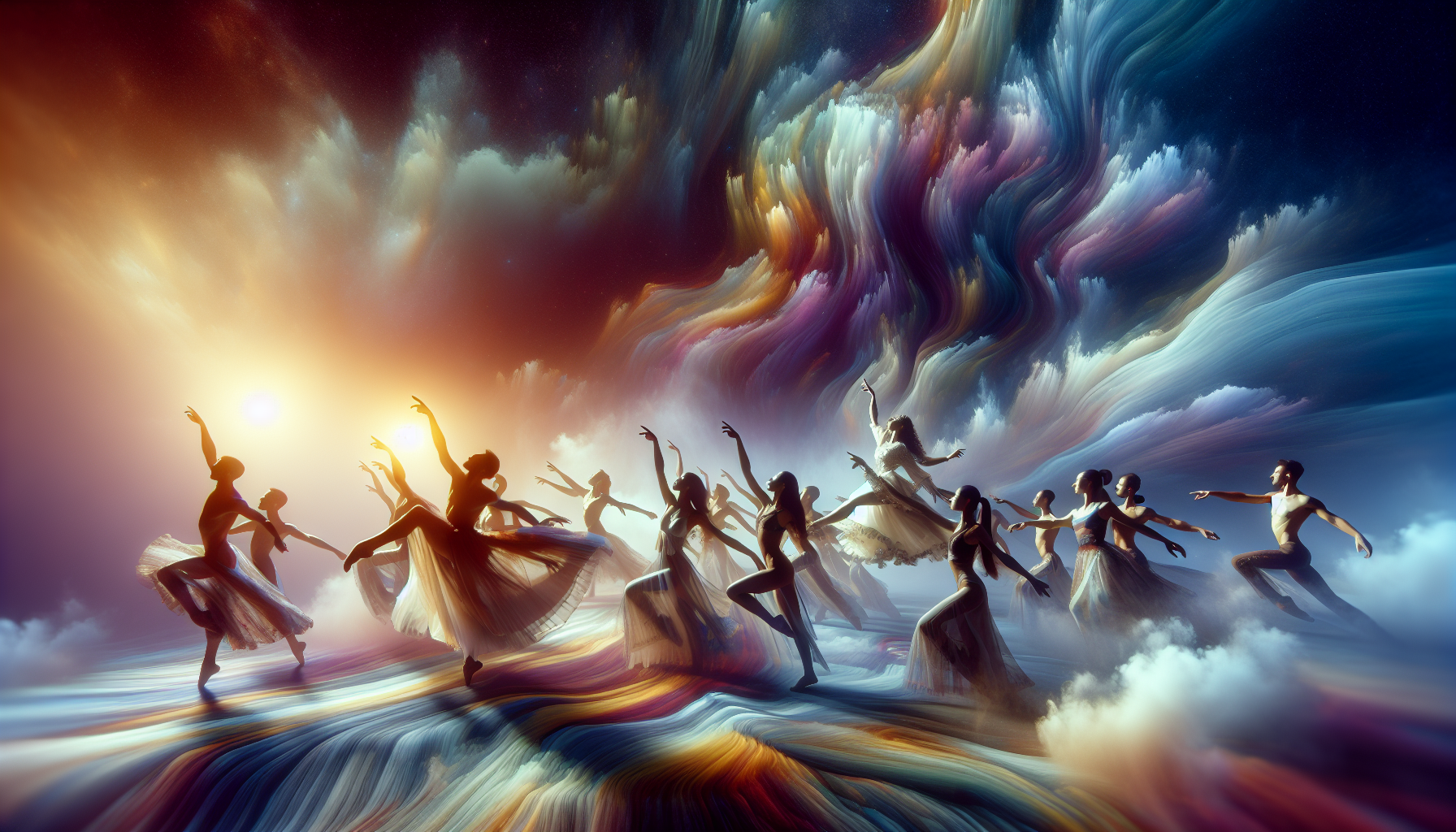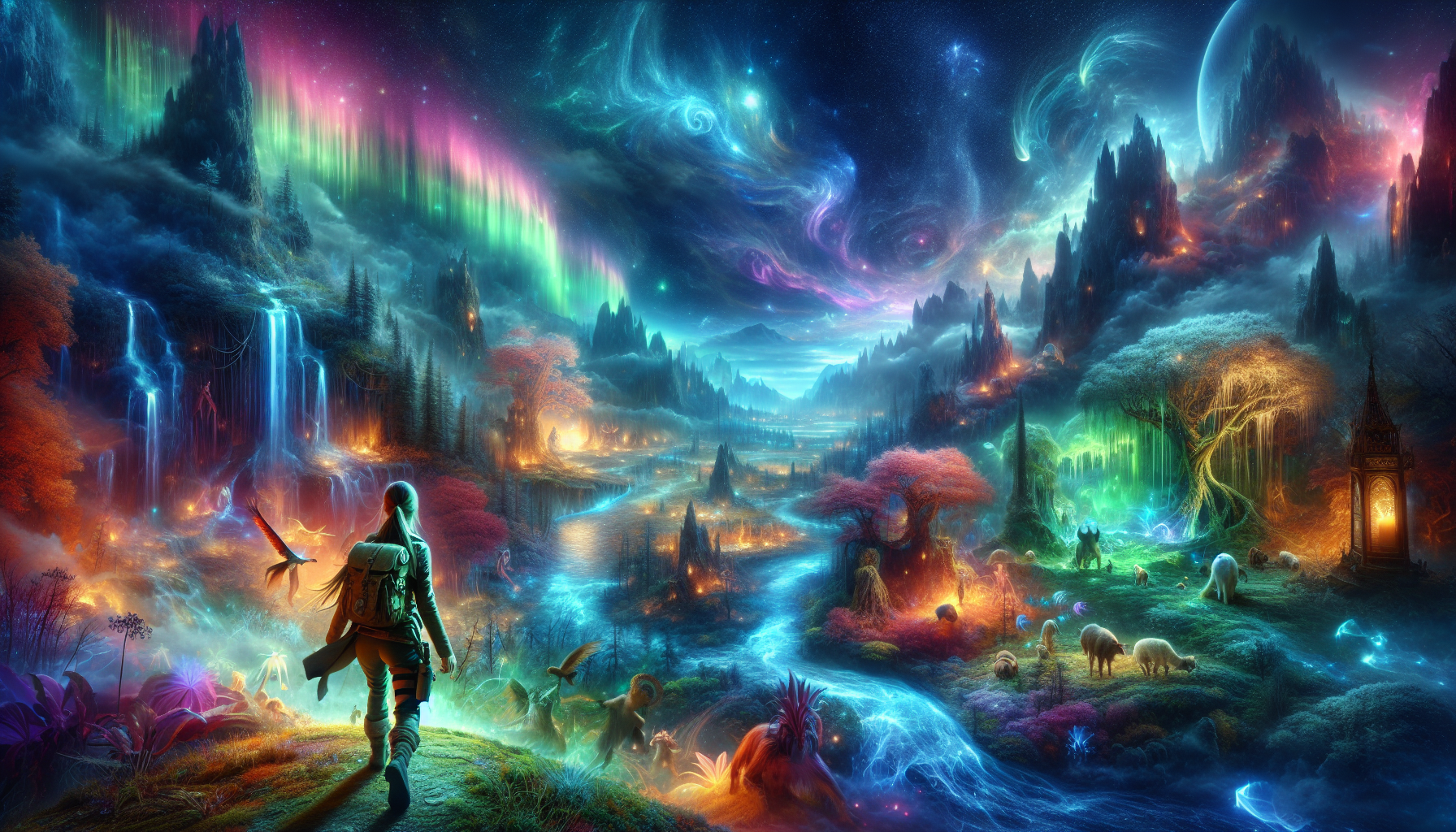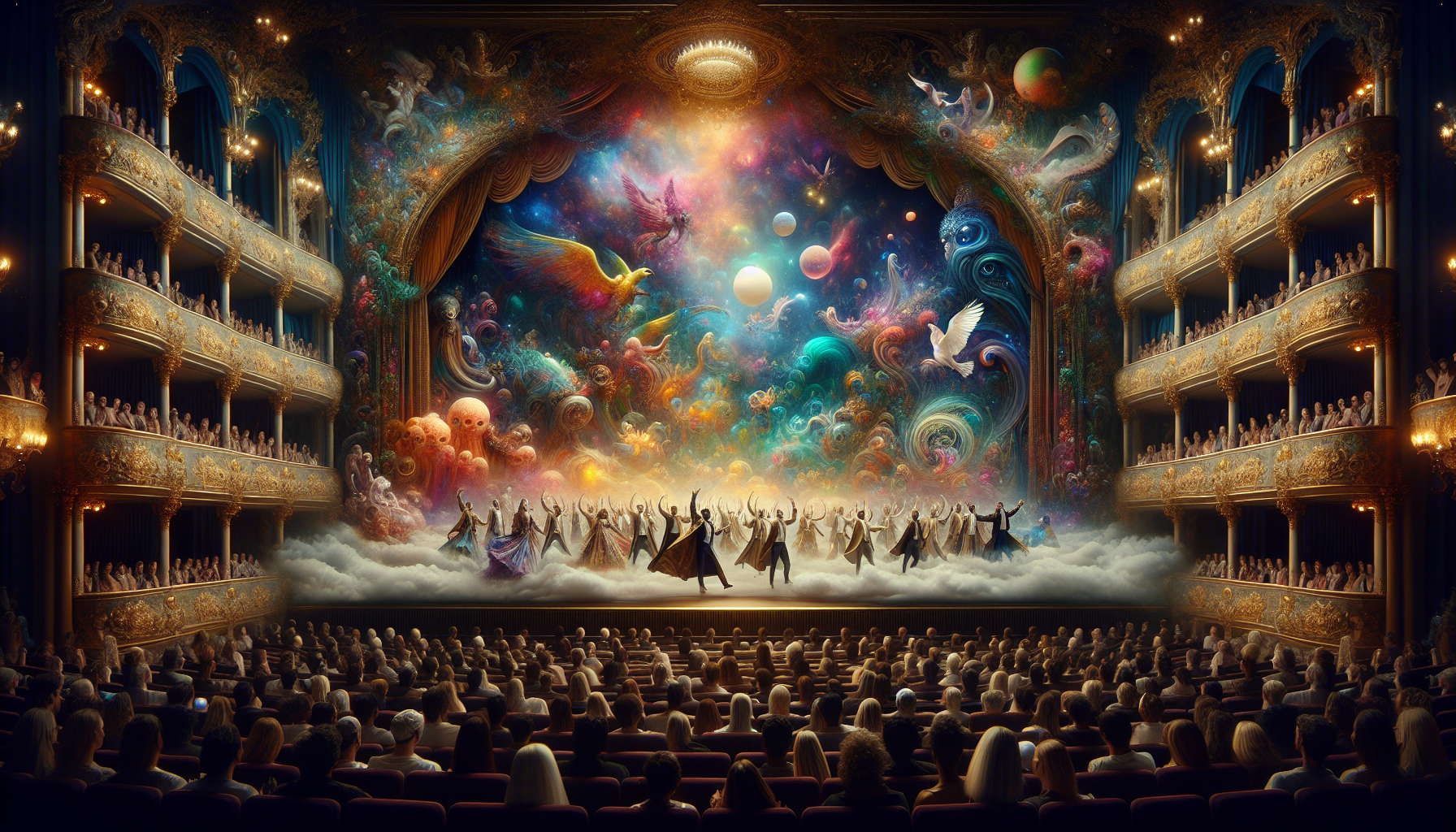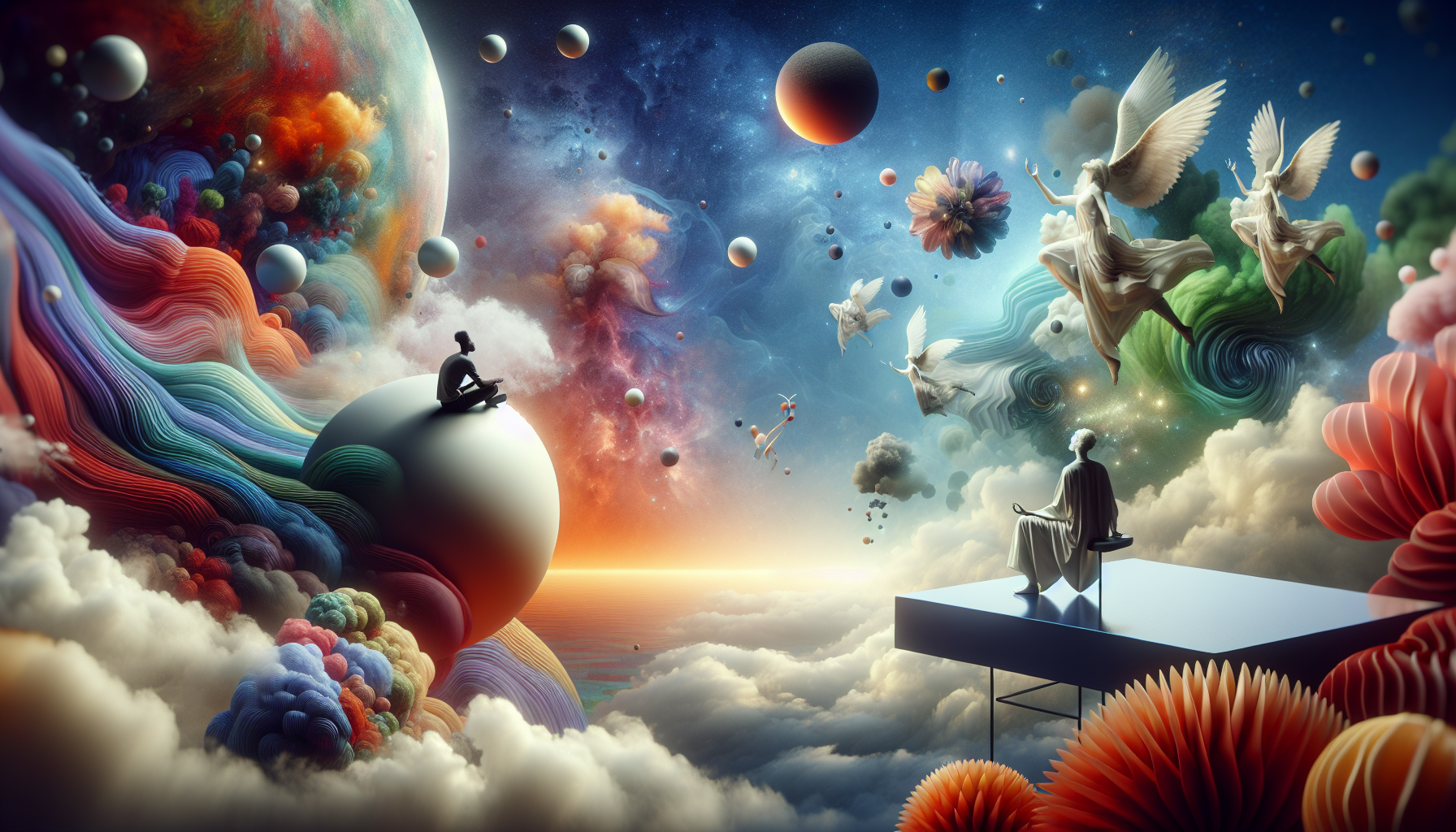In a world where words often fail to express the depth of human emotion, dance emerges as a universal language, painting vivid dreamscapes in motion. It is an art form that transcends cultural and linguistic boundaries, offering a unique glimpse into the soul of the dancer and the collective consciousness of society. Welcome to “Dreamscapes in Motion: Capturing Emotions Through Dance,” a journey into the heart of this mesmerizing art form where every pirouette, leap, and gesture speaks volumes, whispering secrets of the human spirit that are both timeless and immediate. 🌟
At its core, dance is a powerful storyteller. It is the rhythmic pulse of our shared human experience, a tapestry woven from the threads of history, culture, and personal narrative. As we explore the intricate relationship between movement and emotion, we will delve into the diverse styles of dance that have evolved across the globe, each with its own unique language and story to tell. From the passionate intensity of flamenco to the graceful fluidity of ballet, from the explosive energy of hip-hop to the contemplative depth of contemporary dance, we will uncover how each form captures and conveys the myriad emotions that define our existence. Along the way, we will meet the visionaries—choreographers, dancers, and scholars—who dedicate their lives to pushing the boundaries of this art form, using dance as a tool for personal expression, cultural preservation, and social change.
As we embark on this exploration, we will also consider the impact of dance on both the individual and society. How does engaging with dance transform us, both physically and emotionally? What role does dance play in cultural identity and social cohesion? And how can dance be a force for healing and empowerment in a world that is increasingly fragmented and disconnected? Through personal anecdotes, expert insights, and evocative performances, this article will illuminate the transformative power of dance, inviting you to see the world through the eyes of a dancer and perhaps even inspiring you to find your own voice within the silent poetry of movement. 💃✨
The Art of Dance: An Emotional Expression
Dance is an ancient form of expression that transcends cultures and eras, serving as a powerful medium through which emotions are conveyed. Unlike other forms of art, dance combines movement with rhythm, enabling a unique form of communication. The body becomes the canvas, and each movement tells a story, capturing a plethora of emotions that words often fail to express. In today’s fast-paced world, dance remains a vital form of artistic expression, continuously evolving while staying deeply rooted in its traditional origins.
The history of dance is as rich as it is varied. From the sacred rituals of indigenous tribes to the polished performances of ballet companies, dance has always been an integral part of human culture. In recent years, contemporary dance has emerged as a popular form of self-expression, breaking away from conventional norms and embracing an experimental approach. It allows dancers to explore emotions through improvisation and interpretive movements, often blurring the lines between dance, theater, and performance art.
A crucial aspect of dance is its ability to evoke emotions in both the performer and the audience. Whether it’s the joy of a triumphant leap or the sorrow of a slow, deliberate motion, dance has the power to make us feel deeply. The emotional impact of dance can be attributed to several factors, including the dancer’s technique, the choreography, the music, and the overall atmosphere. As such, dance is not just a physical activity but an emotive art form that resonates on a profound level.
Dance Genres: A Symphony of Styles
The world of dance is as diverse as it is expressive, encompassing a wide range of genres, each with its own unique characteristics and emotional appeal. Understanding these styles can provide deeper insight into how dance captures and communicates emotions. Some of the most popular genres include ballet, contemporary, jazz, hip-hop, and traditional cultural dances. Each of these styles has evolved over time, adapting to cultural shifts and societal changes while maintaining its core elements.
Ballet, often considered the epitome of grace and precision, is a highly technical form of dance that requires rigorous training and discipline. It is known for its fluid movements and ethereal quality, often evoking emotions of beauty and serenity. On the other hand, contemporary dance breaks away from the rigid structures of ballet, focusing instead on expression and freedom of movement. This style is often used to convey complex emotions and narratives, exploring themes such as identity, conflict, and transformation.
Hip-hop dance, with its roots in street culture, is energetic and vibrant, often used to express themes of empowerment and resilience. It is characterized by its dynamic movements and rhythmic beats, reflecting the pulse of urban life. Meanwhile, traditional cultural dances offer a glimpse into the customs and stories of various societies, each dance telling a unique tale of heritage and tradition. From the passionate flamenco of Spain to the intricate Kathak of India, these dances not only entertain but also educate, preserving history through motion.
Capturing Emotions: The Role of Choreography
Choreography plays a pivotal role in the emotional impact of dance, serving as the blueprint for movement and expression. A choreographer’s vision brings a dance to life, guiding dancers in how to move and interact with the music and each other. This creative process involves careful consideration of various elements, such as timing, space, dynamics, and emotion. Each movement is deliberate, designed to convey a specific feeling or tell a particular story, transforming the abstract into the tangible.
One of the most fascinating aspects of choreography is its ability to transform a simple movement into a powerful expression of emotion. A choreographer can manipulate space and time, creating a visual and emotional journey for the audience. By using contrasting dynamics, such as fast and slow movements or sharp and fluid gestures, a choreographer can evoke a wide range of emotions, from joy and excitement to tension and melancholy. This dynamic interplay between movement and emotion is what makes choreography an essential component of dance.
The collaboration between dancer and choreographer is also crucial in capturing emotions. While the choreographer provides the framework, the dancer brings their personal interpretation and emotional depth to the performance. This synergy between the two creates a more authentic and impactful expression, as the dancer internalizes the choreography and translates it into their unique emotional language. This process not only enhances the emotional resonance of the dance but also allows the dancer to connect more deeply with the audience.
The Impact of Music: An Emotional Catalyst
Music is an integral part of dance, acting as both a backdrop and a catalyst for emotion. The relationship between music and dance is symbiotic, with each enhancing the other’s expressive potential. Music sets the tone and atmosphere of a dance, guiding the rhythm and pace of the movements. It also has the power to evoke emotions, drawing both the dancer and the audience into a shared emotional experience. The choice of music can significantly influence the mood of a dance, whether it is an uplifting, energetic piece or a haunting, melancholic melody.
The emotional impact of music on dance is particularly evident in how it shapes the narrative and emotional arc of a performance. A well-chosen piece of music can amplify the emotional intensity of a dance, highlighting moments of tension, release, or transformation. It can also add layers of meaning to the choreography, enriching the storytelling aspect of the dance. For instance, a dance set to a classical symphony might evoke a sense of grandeur and elegance, while a performance accompanied by contemporary electronic music might convey a more modern and edgy vibe.
Moreover, music can serve as a source of inspiration for choreographers and dancers, sparking creativity and imagination. The rhythm and melody of a piece can inspire innovative movements and patterns, leading to new interpretations and expressions. This interplay between music and dance creates a dynamic and immersive experience, where the boundaries between the two art forms blur, and the emotions conveyed become more powerful and profound.
The Role of Technology in Modern Dance
In recent years, technology has begun to play an increasingly significant role in the world of dance, offering new possibilities for creativity and expression. From digital projections and interactive installations to virtual reality experiences, technology is transforming how dance is created and experienced. This fusion of technology and dance allows artists to explore new dimensions of movement and emotion, pushing the boundaries of traditional performance.
One of the most exciting developments in this area is the use of motion capture technology, which enables dancers to create digital avatars that mimic their movements in real-time. This technology opens up new possibilities for storytelling and expression, allowing for the creation of immersive virtual worlds where dancers can interact with digital environments and characters. Motion capture also provides valuable insights into the biomechanics of dance, helping choreographers refine their work and dancers improve their technique.
Technology is also enhancing the accessibility and reach of dance, allowing performances to be shared with a global audience through online platforms. Live streaming, social media, and video sharing sites like YouTube have become important tools for dancers and choreographers to showcase their work and connect with audiences worldwide. This increased accessibility not only broadens the audience for dance but also fosters a greater appreciation and understanding of the art form across different cultures and communities.
Exploring Dance as Therapy
Dance is not only a form of artistic expression but also a powerful tool for healing and therapy. Dance therapy, also known as dance/movement therapy (DMT), uses movement to promote emotional, cognitive, and physical well-being. This therapeutic approach is based on the premise that the body and mind are interconnected, and that movement can be a powerful medium for expressing and processing emotions. Dance therapy is used in a variety of settings, including hospitals, schools, and community centers, helping individuals of all ages and abilities.
The benefits of dance therapy are manifold, with research showing its positive impact on mental health, emotional regulation, and social connection. For individuals with anxiety, depression, or trauma, dance therapy provides a safe space to explore and express emotions that may be difficult to articulate verbally. The rhythmic and repetitive nature of dance can also have a calming effect, reducing stress and promoting relaxation. Furthermore, the social aspect of dance encourages interaction and collaboration, fostering a sense of community and support.
Dance therapy is also beneficial for individuals with physical challenges or disabilities, as it promotes body awareness, coordination, and mobility. Through guided movement and improvisation, participants can explore new ways of moving and expressing themselves, enhancing their physical and emotional well-being. The inclusive nature of dance therapy makes it a valuable tool for empowerment and self-discovery, enabling individuals to connect with their bodies and emotions in a meaningful and transformative way.
Dance and Cultural Identity
Dance is deeply intertwined with cultural identity, serving as a reflection of a community’s history, values, and traditions. Across the globe, traditional dances are performed to celebrate cultural heritage and to pass down stories and customs from one generation to the next. These dances are more than just performances; they are living traditions that embody the spirit and essence of a culture.
Each culture has its own distinct dance forms, each with its own unique movements, rhythms, and costumes. For example, the vibrant samba of Brazil, with its lively beats and colorful attire, reflects the joyful and celebratory nature of Brazilian culture. In contrast, the solemn and introspective movements of the Japanese Noh dance convey a sense of spirituality and ritual. These cultural dances provide insight into the values and beliefs of a society, offering a window into its history and way of life.
In today’s globalized world, dance continues to play a vital role in preserving cultural identity, while also serving as a platform for cross-cultural exchange and understanding. As traditional dances are shared and adapted across different cultures, they create opportunities for dialogue and connection, fostering mutual respect and appreciation. This dynamic interplay between tradition and innovation ensures that dance remains a vibrant and evolving art form, celebrating both the diversity and unity of human expression.
Conclusion
In conclusion, “Dreamscapes in Motion: Capturing Emotions Through Dance” explores the profound connection between movement and emotion, highlighting how dance transcends mere physical expression to become a powerful narrative tool. Throughout this article, we delved into various facets of dance, from its historical roots to its modern-day significance in diverse cultures. We examined how dancers use their bodies to convey complex emotions, creating a universal language that speaks to the heart of human experience.
The key points addressed include the evolution of dance as an art form, the psychological impact of movement on both performers and audiences, and the innovative ways in which contemporary dancers are pushing boundaries to express nuanced emotional landscapes. We also discussed the role of technology in enhancing the visual and emotive aspects of dance, making it more accessible to a global audience.
The importance of this topic lies in its ability to foster empathy, understanding, and connection among people from different backgrounds. Dance, as an embodiment of emotion, serves as a bridge between cultures and individuals, promoting inclusivity and unity. As we continue to navigate an increasingly complex world, the power of dance to communicate and connect on an emotional level becomes ever more significant.
I encourage you, dear reader, to reflect on the themes discussed and consider how dance has touched your life. Whether you’re a seasoned dancer or an appreciative audience member, there’s a role for everyone in this beautiful dialogue of movement and emotion. Share your thoughts and experiences in the comments below, and consider sharing this article with others who might find inspiration in the art of dance. Together, we can celebrate and elevate this timeless form of expression, ensuring it continues to inspire and move us all.
For further reading and exploration, I recommend visiting reputable sources such as Dance Magazine and The New York Times Dance Section for the latest insights and developments in the world of dance.
Let’s continue to explore the dreamscapes of emotion through dance, and may we always find joy and understanding in the movement. 🌟

Toni Santos is a visual storyteller and dream archivist whose work explores the delicate boundary between memory and imagination. Through layered visuals and symbolic design, Toni captures the fleeting essence of dreams — those strange, beautiful, and sometimes haunting fragments that drift through sleep and linger in waking thought.
His creative journey is rooted in a deep fascination with the subconscious and the imagery it conjures. From half-remembered landscapes to recurring symbols and surreal encounters, each piece Toni brings to life becomes a portal into the inner archive — where time distorts, meanings shift, and personal mythology takes form.
With a background in handcrafted artistry and visual composition, Toni merges intuition with intention. His work doesn’t just depict dreams; it preserves them, translating ephemeral moments into tangible expressions that evoke emotion, curiosity, and quiet revelation. Each visual is both a record and an invitation to explore the rich terrain of inner life.
As the guiding voice behind Vizovex, Toni offers illustrated dream journals, symbolic studies, and visual essays that help others connect with the poetic structure of their own subconscious landscapes. His art becomes a mirror — not just of what we see at night, but of what we carry deep within.
His work is a tribute to:
The fragile beauty of forgotten dreams
The language of symbols in the subconscious mind
The inner worlds we visit but rarely name
Whether you’re a lucid dreamer, a seeker of hidden meanings, or someone fascinated by the mystery of sleep-born stories, Toni welcomes you to step into a space where dreams are not lost — they are archived, one vision, one sketch, one silent narrative at a time.




